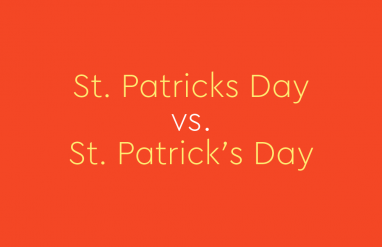Hello, it is I. Those are the lyrics, right? … Or should they be?
Both I and me are pronouns. But there’s a clear difference between the two: I is what is known as a subject pronoun, and me is an object pronoun. What does that mean in the case of it is me and it is I?
When to say “It is I”
The phrase it is I is correct for formal writing. Traditionally, the use of I is appropriate when it follows a linking verb like is, was, or were. Linking verbs express a state of being rather than describing an action. They’re usually paired with subject pronouns. Subject pronouns include I, he, she, they, and we. They reference the person performing the action in the sentence.
In writing, it is I sometimes shows ranks or formal relationships. For example in Jane Austen’s Sense and Sensibility, John Willoughby says to Mrs. Dashwood, “It is I who may rather expect to be ill—for I am now suffering under a very heavy disappointment!” Sense and Sensibility was published in 1811, a time period where a proper young man was expected to speak formally to an older woman.
Examples of It is I in a sentence
Because it is I is so formal, it’s not often encountered in everyday conversation, articles, or books. It can be found in older texts, such as the Bible: It is I, do not be afraid (John 6:20). It can also be used like this:
- It is I she wishes to see tonight.
- Perhaps it is I who should recuse myself from the vote.
- I think it is I who should ask your forgiveness.
- Is this Joe? – It is I.
When to say “It is me”
It is me (or it’s me) is considered an informal style. Today, most native English speakers use It is me instead of It is I.
Me is usually an object pronoun. In most cases this means it’s on the receiving end of the action in a sentence. For example, in My sister gave me the book, the speaker is the recipient of the giving. The use of me in the phrase it is me isn’t typical usage of the pronoun, since there is no action to receive.
It’s me is used more often in casual speech. Judy Blume’s book, Are You There God? It’s Me, Margaret, uses the informal phrase in the title and throughout the work. In this young adult novel, Margaret deals with the questions and challenges in her life by talking to God. Since Margaret is an 11-year-old girl, she speaks casually: “Are you there God? It’s me, Margaret. We’re moving today.” She’s talking to someone she trusts and confides in, so there’s no need for formality.
Examples of It is me in a sentence
- With this new haircut, no one knows it is me.
- You can say anything. It is me you’re talking to.
- It is me in the picture.
- Is this Lou? – Yes, it’s me.
In general, both it is I and it’s me are valid ways of introducing yourself. It’s just that it is I is more formal, and can sound old fashioned to the modern ear. It’s me is more casual and relaxed, and you’re more likely to hear it in present-day conversations.














